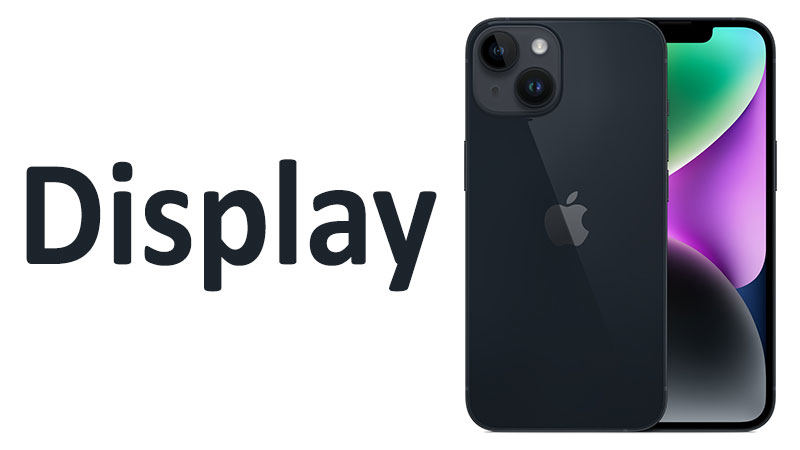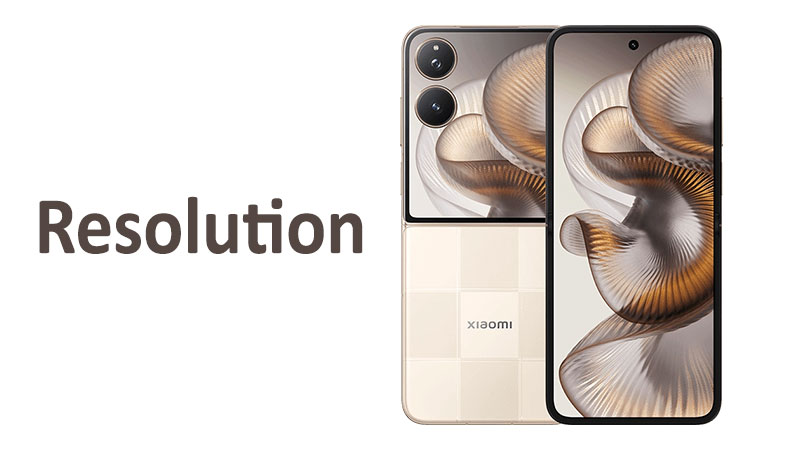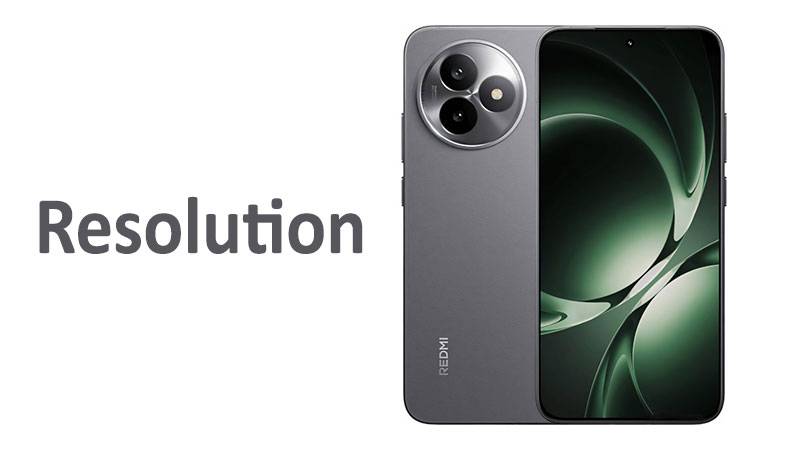The Apple iPhone 14 display remains one of the most important components of the device. This screen defines the user experience, from browsing the web to consuming high-dynamic-range video content. This comprehensive review examines every aspect of the display on the standard iPhone 14 model. It details the technical specifications, analyzes the visual quality, and offers real-world performance context. Understanding the core technology is essential for any potential buyer or mobile technology enthusiast. We will look closely at the Super Retina XDR OLED panel, its resolution, its impressive brightness levels, and the protective innovations built into the glass. This analysis provides a complete picture of the screen quality you can expect from the iPhone 14.
The display is the window to the phone’s entire operating system and media library. Apple has consistently focused on color accuracy and panel consistency. This focus ensures a premium viewing experience for all users. The following sections break down the specific technologies and metrics that make this display highly capable. We compare it to its predecessor and highlight crucial features buyers must consider before making a purchase. This review serves as the definitive guide to the iPhone 14 screen.
Core Display Technology: Super Retina XDR
Apple assigns the Super Retina XDR designation to its top-tier mobile displays. This name signifies a panel that meets very high standards for brightness, contrast, and color fidelity. The core of this technology is the integration of an organic light-emitting diode, or OLED, panel. This is not just a marketing term. It represents a significant technological leap over older liquid crystal displays (LCDs). The XDR suffix stands for Extreme Dynamic Range. This indicates the display’s exceptional capability to handle vast differences between the brightest whites and the deepest blacks.
What is Super Retina XDR?
Super Retina XDR is Apple’s specialized implementation of OLED technology. It is calibrated to deliver superior dynamic range performance. The technology is engineered for professional-grade color reproduction. It ensures that photos and videos appear exactly as they were intended. The XDR process optimizes the display to handle the intense light output and deep contrast required for HDR content. This results in stunning clarity and depth when watching supported movies or shows. Apple customizes the hardware and software integration. This customization maintains consistent performance across various lighting environments. The user always sees a consistent, high-quality image.
OLED Excellence and Benefits
The underlying OLED technology offers numerous inherent advantages over LCD screens. The most notable advantage is the ability of each individual pixel to generate its own light. When a pixel needs to display black, it simply turns off. This creates truly perfect black levels. This absolute black results in an effectively infinite contrast ratio. The depth and dimensionality of images are vastly superior because of this infinite contrast.
OLED panels are also generally more energy-efficient than LCDs when displaying darker content. This helps improve battery life for users who prefer Dark Mode or consume a lot of high-contrast media. Furthermore, OLEDs typically offer extremely fast response times. This results in minimal motion blur. Fast response times ensure smooth visual feedback, especially when scrolling quickly or playing fast-paced video games. The display provides a responsive and aesthetically pleasing visual foundation for the entire phone.
Key Display Specifications and Metrics
To fully appreciate the iPhone 14 display, we must examine the specific technical numbers. These figures confirm the display’s capabilities in areas like sharpness, size, and brightness. The base iPhone 14 model features a 6.1-inch screen. This size provides a comfortable balance between viewing space and ease of single-handed use. It is a key factor in the phone’s overall ergonomic design.
Resolution and Pixel Density
The iPhone 14 boasts a resolution of 1170 x 2532 pixels. This resolution adheres to a tall 19.5:9 aspect ratio, suitable for modern video content and simultaneous app usage. The resolution combines with the physical screen size to produce a pixel density of approximately 460 pixels per inch (ppi).
This 460 ppi density is exceptionally high. It means the individual pixels are virtually indistinguishable to the human eye at a typical viewing distance. Text appears razor-sharp. Detailed images render with clarity and precision. The term “Retina” was coined by Apple to describe this level of sharpness. It ensures the user does not perceive pixelation. The visual experience is smooth, clear, and highly detailed, regardless of the content being viewed. This level of resolution provides the foundation for excellent image quality.
Brightness Performance
Brightness is a critical metric for a mobile device. It determines screen visibility outdoors under direct sunlight. The iPhone 14 display offers excellent brightness performance. It maintains a typical high-brightness mode (HBM) of 800 nits. This level ensures content remains clear and readable even in challenging daylight conditions. The boost over older models is significant for outdoor usability.
Furthermore, the display reaches a peak brightness of 1200 nits when displaying HDR content. This peak brightness is crucial for showcasing the extreme highlights in HDR video. It provides the necessary impact for explosions, sunlight reflections, and bright lighting effects in films. This massive jump in peak luminance contributes directly to the “Extreme Dynamic Range” aspect of the Super Retina XDR branding. The display provides sufficient power to combat glare and deliver stunning media contrast.
Display Size and Form Factor
The standard iPhone 14 features a 6.1-inch display. This size is a popular sweet spot for many users. It offers ample screen real estate for immersive video viewing and productive multitasking. Yet, it avoids the bulk of larger “Max” models. The physical dimensions contribute to the device’s comfort in the hand.
The screen-to-body ratio is approximately 86.0%. This figure indicates that the display takes up a large portion of the phone’s front surface. The bezels surrounding the screen are minimal and symmetrical. This maximizes the viewing area without making the phone unwieldy. The 6.1-inch size provides an excellent compromise. It balances portability with media consumption needs effectively.
Visual Quality and Content Experience
Raw specifications are important, but the true test of a display lies in the visual quality it delivers. The iPhone 14 excels in areas of color reproduction, contrast, and support for advanced video standards. Apple prioritizes color accuracy above all else. This results in a trustworthy display for photographers and designers.
High Dynamic Range (HDR) Support
The iPhone 14 fully supports two leading high dynamic range formats: HDR10 and Dolby Vision. This capability is vital for modern video consumption. HDR content significantly expands the range of colors and light levels a display can reproduce. This creates a more lifelike and intense viewing experience.
Dolby Vision, in particular, is a format where the iPhone truly stands out. Dolby Vision uses dynamic metadata. This means the display adjusts brightness and color settings on a frame-by-frame basis. This optimization maximizes the visual quality for every moment of a film. The 1200 nits peak brightness capability directly supports this. It ensures bright scenes pop with intense realism. The phone provides a high-fidelity portable cinema experience because of this feature integration.
Color Accuracy and Calibration
Apple engineers calibrate every iPhone display at the factory. This meticulous process ensures industry-leading color accuracy. The iPhone 14 display supports the P3 wide color gamut. This gamut is a professional color standard used in digital cinema. Supporting P3 means the display can reproduce a much broader range of colors, especially vibrant greens and reds, compared to the older sRGB standard.
The inclusion of True Tone technology further refines the viewing experience. True Tone uses ambient light sensors. It automatically adjusts the white balance of the display to match the color temperature of the light around the user. This makes white paper look consistent, whether the user is under warm incandescent bulbs or cool fluorescent lights. This feature reduces eye strain and ensures colors look natural, regardless of the environment. Apple maintains exceptional color consistency, making the iPhone reliable for creative work.
Contrast Ratio and True Blacks
The OLED technology provides the fundamental benefit of an effectively infinite contrast ratio. Since every pixel can completely turn off, the darkest point of the screen produces zero light. This absence of light is known as a true black. In contrast, LCD screens always have a backlight operating. This means their “black” is actually a dark gray.
The true black levels on the iPhone 14 enhance the perceived sharpness and depth of images. Text on a black background seems to float on the surface of the glass. The infinite contrast ratio is particularly noticeable when viewing content in a dark room. It creates an incredibly immersive experience. The contrast performance is a cornerstone of the Super Retina XDR quality. It is a key advantage of this display technology.
The Durability Factor: Protection and Resilience
A premium display requires premium protection. Apple addresses the issue of durability with its proprietary material, the Ceramic Shield. This protective layer covers the display glass. It provides enhanced resilience against drops and scratches. This is a critical factor in a device that users handle daily.
The Ceramic Shield Innovation
Apple introduced the Ceramic Shield with the iPhone 12 series. It claims to offer four times better drop performance compared to previous iPhone generations. Ceramic Shield is not standard glass. It is a glass-ceramic material that is tougher than most metals. It achieves this toughness through a process of crystallizing nano-ceramic particles within the glass matrix.
These nano-ceramic crystals are transparent. They create a structure that is both highly durable and optically clear. The material is hard and resistant to the micro-scratches that accumulate from everyday pocket wear. The Ceramic Shield protects the display effectively. It gives users peace of mind regarding the longevity of their screen. This innovation is a substantial, often-overlooked feature. It significantly contributes to the phone’s overall value. The front of the phone is more resistant to accidental damage than ever before.
Comparison and Market Context
Understanding the iPhone 14 display requires placing it in context. We must compare its features against its immediate predecessor and current competitor flagships. This helps determine whether the display is an innovative leap or a consistent performer.
iPhone 13 vs. iPhone 14 Display: The Consistency Argument
The most important point for prospective buyers is the continuity between the iPhone 13 and the standard iPhone 14 display. Both models use a 6.1-inch Super Retina XDR OLED panel with the same 1170 x 2532 resolution. Crucially, the base iPhone 14 model lacks the ProMotion technology. ProMotion offers a 120Hz adaptive refresh rate. This means the iPhone 14 display operates at a standard 60Hz refresh rate.
For most users, the 60Hz rate is perfectly acceptable. However, users upgrading from an iPhone 13 will notice little difference in visual quality. The panels are almost identical in terms of contrast and color. The key disappointment for some enthusiasts is the omission of the 120Hz refresh rate found in the iPhone 14 Pro models. The display quality remains excellent, but it offers minimal technical evolution over its predecessor. This consistency ensures high quality but misses out on a competitive refresh rate feature.
Versus Key Android Competitors
When compared to contemporary Android flagships, the iPhone 14 display holds its own in most areas, but it reveals one significant deficiency. The iPhone’s strength lies in its unparalleled color calibration and consistent delivery of brightness. Android displays often push color saturation higher for a more immediately vivid look. However, the iPhone remains truer to professional color standards. Its Dolby Vision support is also often better integrated than rival HDR implementations.
The primary area where the iPhone 14 lags is the refresh rate. Most top-tier Android phones offer 120Hz displays, often utilizing LTPO technology for adaptive refresh rates. This allows for smoother scrolling and animation compared to the iPhone 14’s fixed 60Hz. The 120Hz refresh rate provides a tangible feeling of responsiveness. Therefore, users who prioritize maximum smoothness will notice this difference. While the iPhone 14’s quality is superb, its 60Hz refresh rate is a competitive disadvantage. This is a vital point for buyers who consume fast-motion content or prioritize interface fluidity.
Buyer’s Guide and Critical Evaluation
Any thorough review must distill the technical information into practical advice for the reader. We summarize the advantages and disadvantages of the display. We also offer points for consideration for a potential upgrade. The display is a major factor in the purchasing decision.
The Pros of the iPhone 14 Display
The strengths of the iPhone 14 display are substantial and numerous. First, the Super Retina XDR technology delivers perfect black levels and an effectively infinite contrast ratio. This makes all content look vibrant and deep. Second, the color accuracy is industry-leading. Apple’s meticulous calibration ensures colors are faithful to the source material. Third, the peak brightness of 1200 nits for HDR content makes for stunning video playback. It is a genuine cinematic experience in the user’s hand. Fourth, the 800 nits of typical outdoor brightness ensures excellent visibility in bright sunlight. Fifth, the Ceramic Shield protection provides exceptional durability. This reduces the risk of screen damage from drops. Finally, the inclusion of both HDR10 and Dolby Vision ensures maximum compatibility with high-quality streaming services.
The Cons and Missing Features
Despite its many advantages, the iPhone 14 display has two notable drawbacks, especially in the context of its price point. The most significant con is the standard 60Hz refresh rate. Competing phones in this price bracket offer 120Hz ProMotion displays. This fixed 60Hz rate results in a less fluid scrolling experience compared to high refresh rate panels. Many users consider this a major oversight in a modern flagship device.
The second drawback is the absence of an Always-On Display (AOD). The iPhone 14 Pro models introduced this feature. The AOD allows the user to see the time, widgets, and notifications without fully waking the screen. The standard iPhone 14 does not include this convenience. Users must tap the screen or raise the phone to view necessary glanceable information. This lack of key modern features detracts from the display’s overall value proposition.
Important Buying Considerations
Prospective iPhone 14 buyers should ask themselves two key questions regarding the display. First, are you coming from an iPhone 11 or older? If so, the move to OLED (Super Retina XDR) will be a monumental visual upgrade. The contrast and sharpness differences will immediately be apparent. The upgrade is highly recommended for these users.
Second, do you prioritize scrolling smoothness (120Hz) or an Always-On Display? If the answer is yes, you must consider the iPhone 14 Pro models. The Pro versions offer these advanced features. If your primary use involves consuming cinematic video and you value color fidelity over fluidity, the base iPhone 14 display is still a fantastic choice. However, if smoothness is critical, the 60Hz refresh rate might feel disappointing. Buyers should manage their expectations regarding the refresh rate before committing to the standard model.
Conclusion
The Apple iPhone 14 display is an exceptional piece of mobile technology. It leverages the Super Retina XDR OLED panel to deliver vibrant colors, perfect contrast, and incredible sharpness at 460 ppi. The brightness levels are more than adequate for any situation, with a stunning 1200 nits peak for HDR content. The display is robust and well-protected by the Ceramic Shield glass. It provides an overall visual experience that remains among the best in the industry for color accuracy and video quality, particularly due to its flawless Dolby Vision implementation.
However, the display is fundamentally identical to its predecessor, the iPhone 13. The fixed 60Hz refresh rate is the single most significant omission. It holds the screen back from competing feature-for-feature with Android rivals that widely offer 120Hz at this price point. This display is best suited for users upgrading from non-OLED iPhones or those who prioritize visual consistency and color fidelity above interface fluidity. It is a premium viewing portal, but not a generational leap. For the ultimate smooth experience, the Pro models remain the only choice.
Frequently Asked Questions (FAQ)
Does the iPhone 14 have a 120Hz display?
No, the standard Apple iPhone 14 has a fixed 60Hz refresh rate display. The faster 120Hz ProMotion technology is exclusively available on the more expensive iPhone 14 Pro and 14 Pro Max models.
What is the resolution of the iPhone 14 display?
The resolution of the iPhone 14 display is 1170 x 2532 pixels. This delivers a pixel density of approximately 460 ppi. This is considered exceptionally sharp and clear for a phone screen.
How bright is the iPhone 14 screen?
The iPhone 14 screen achieves 800 nits of typical brightness in high-brightness mode (HBM) for outdoor visibility. It can reach an impressive peak brightness of 1200 nits when displaying high dynamic range (HDR) content.
What protection does the iPhone 14 display use?
The iPhone 14 display is protected by Apple’s proprietary Ceramic Shield glass. This material incorporates nano-ceramic crystals into the glass for superior durability and four times better drop performance than older iPhone screens.
Is the iPhone 14 display an OLED panel?
Yes, the iPhone 14 uses a Super Retina XDR display, which is based on OLED (Organic Light-Emitting Diode) technology. This allows the screen to achieve perfect black levels and an effectively infinite contrast ratio.



